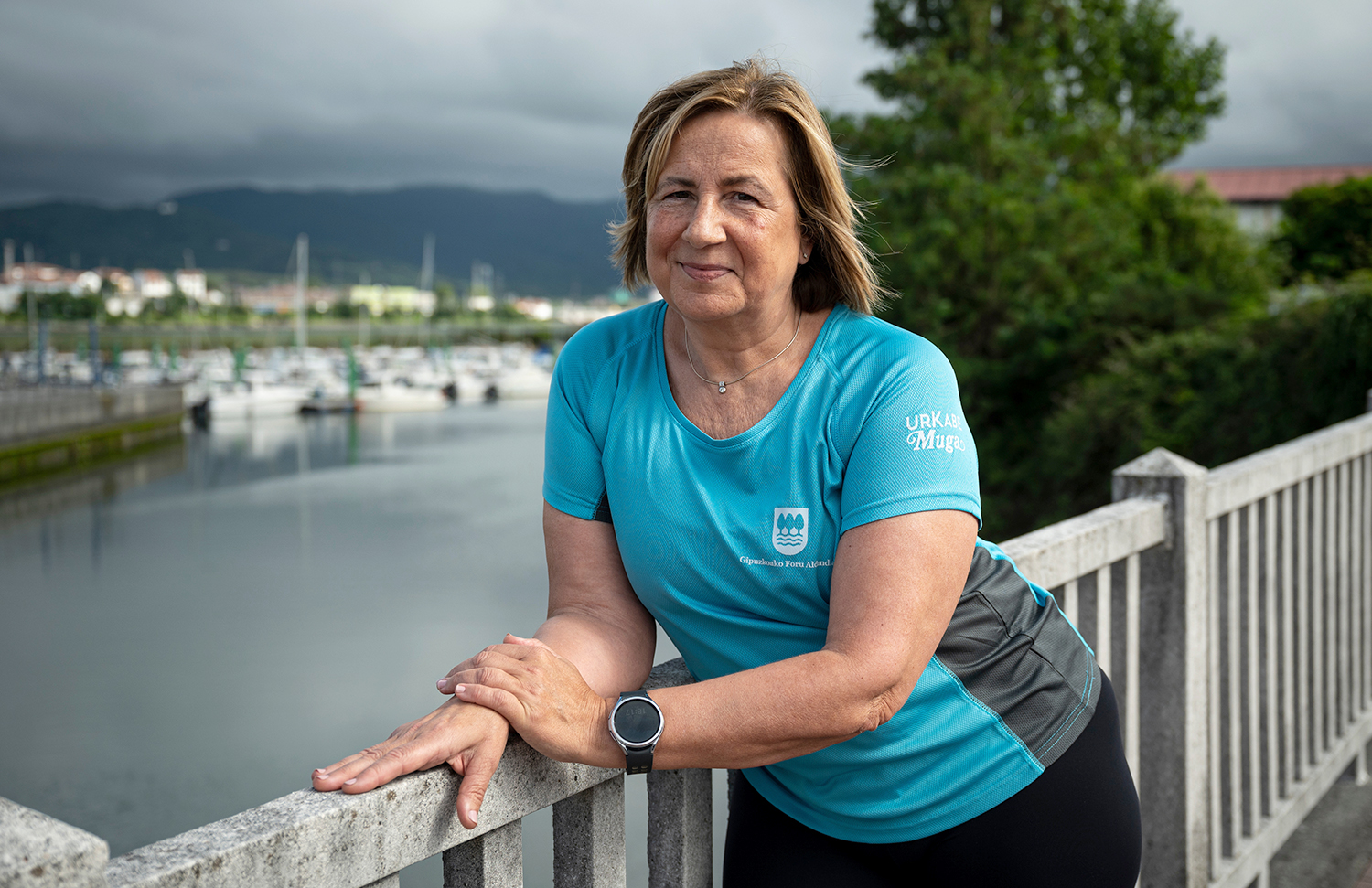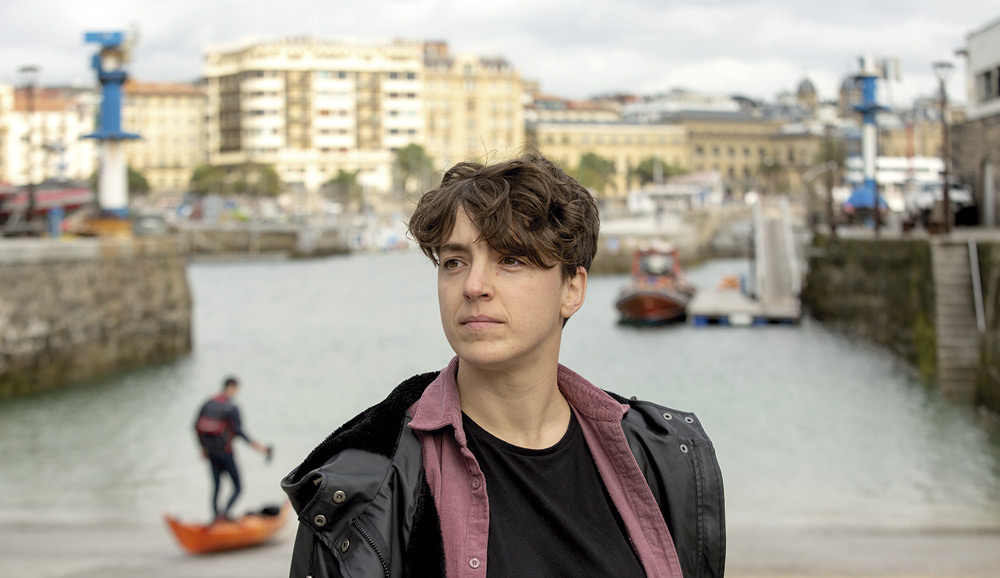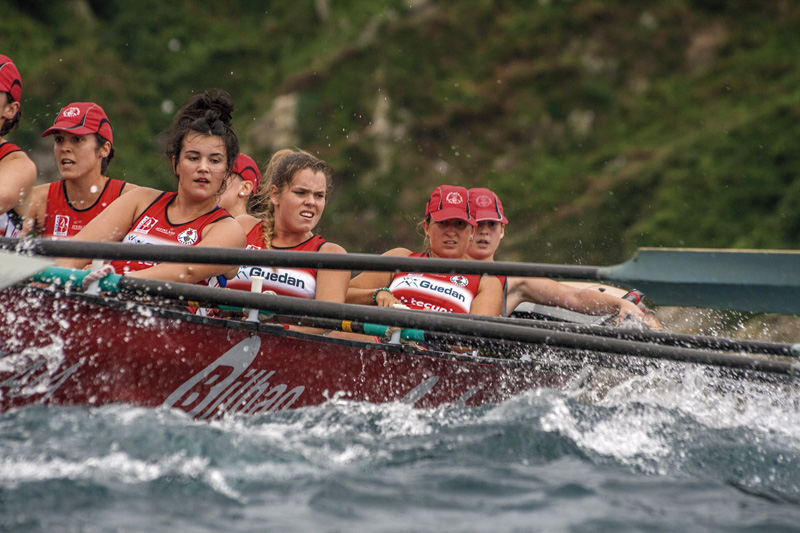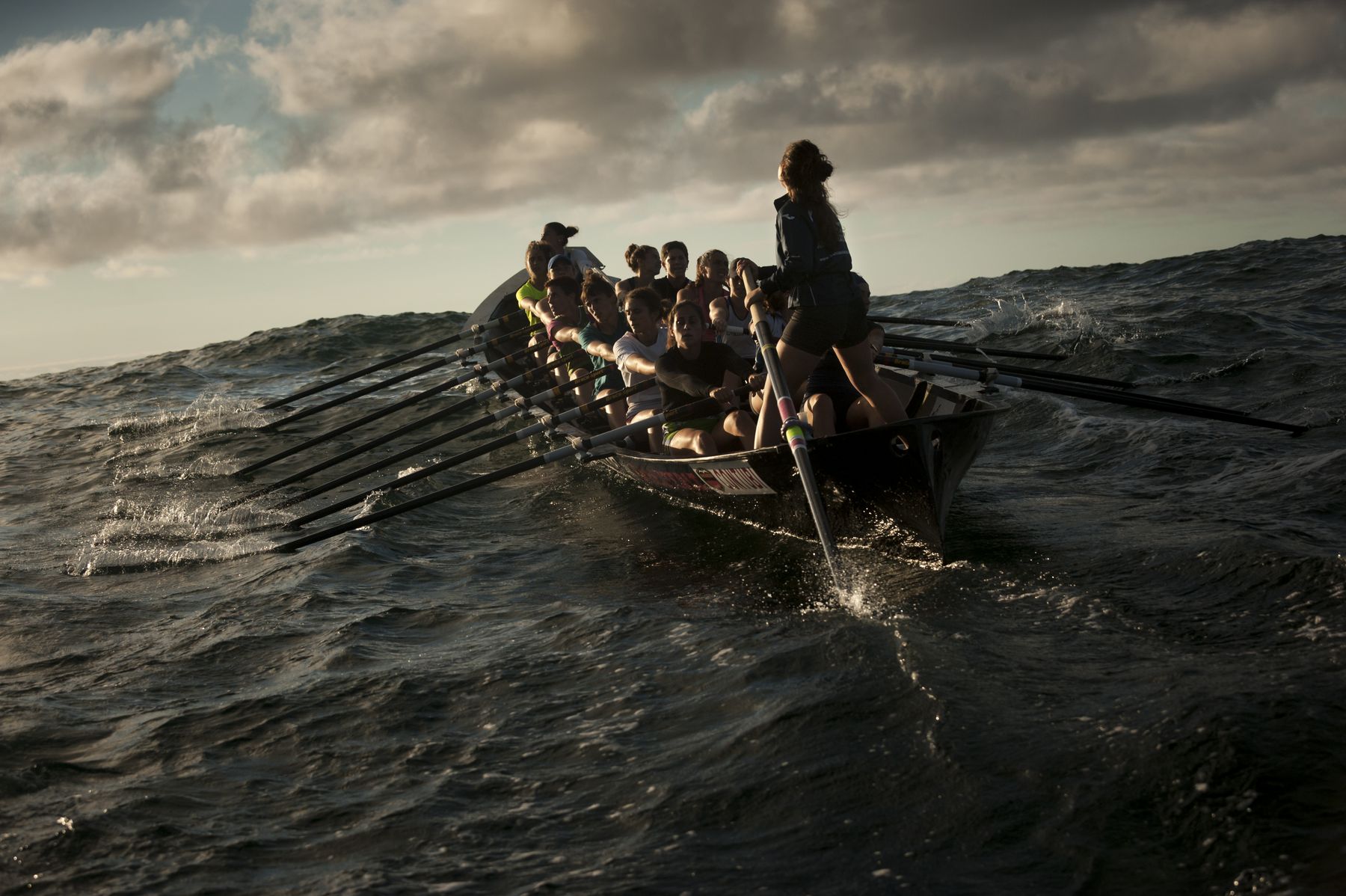There's rowing out of television regatta.
- This year's rowing season is about to end. Not only for high-level sportsmen, but also for “others” remers who have been beating will we see the whole year o.Al of the show margin created by the regattas, at this time of summer they have also, albeit with other objectives, in the shadow of prime stars. Proof of this are the 30 women who have learned to row this year; the boat journey that unites tradition and leisure; and the veterans who have won five flags.
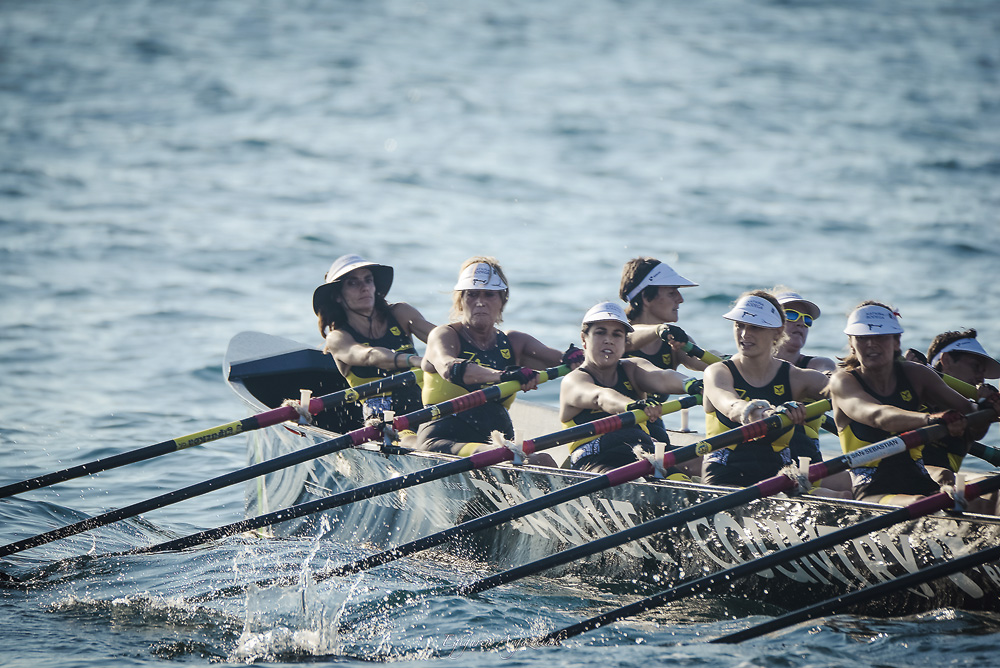
Why don't I go 40 years old?
30 women over 35 years of age, one trainee and one main challenge: Peru-Barcelona-Orio crossing for four days. Almost two months after the end of the challenge, Ainhoa Pozo, Eider Osinalde and Sorkunde Lizaso make it clear: “We didn’t want to prove anything to anyone, except ourselves.” They are 38, 43 and 58 years old respectively, and why not? They are three of the protagonists of the project.
The first stage was one of the most anticipated of the day, with departure in Rio-Bermeo. In the absence of the plan, the sea has risen and reached Getaria. At noon they were in Bermeo, but the sea was calm and they came to Bermeo at 9 p.m. After a hectic day, the warm welcome of the crowd at the port revived its strength: “It was wonderful, the port full of people, applauding, screaming… Above all, the complicity we feel on the part of women has been beautiful, had a point of militancy,” says Lizaso. Listening to the Bermeotars yelling “Aupa Orio!” and ruling out any hint of rivalry in the high-level leagues demonstrates solidarity between peoples. Osinalde warned of this “honored fraternity”: “They have encouraged us because there was no competition. It was the challenge we had with ourselves.”
The next three stages were quieter, although they were always concerned about the possibility of reaching Orio. According to the three rails, the end of the challenge, that is, the achievement of the goal, was an “explosion that was not expected at all” in the village. Well explains this: “The Enrike patron [although they tried to get female patterns they didn’t get any] changed his face when we started entering Orio. We were turning our backs on the people, but he saw everything.” The neighbors, friends and family received the two traineras (the 30 remers arrived in two traineras through Oria) with a warm welcome, more warmly than the remers expected.
But why did 30 adult women, almost all of them never row, begin to row in such a project? It is known that the Oriotarras have a special predisposition and closeness to the rowing world: it is usual that the square is more full when the flag wins than at parties, and it is no coincidence that in the middle of winter or in the middle of summer all the people are dressed in yellow. “The fact of being Oriotarras has certainly caused it. But above all we wanted to do something about nature and sport.” The idea of some Oriotarras who were going to be 40 years old was to row, not a lifelong meal, or run some of the trendy multitudinous marathons. The celebration of the 40th anniversary should be special, and be close to the Oria River, nothing better than to stir. Most of the people who enrolled in the project never had the opportunity to paddle, as in recent years it is about women practicing the trainera. The Zergatik ez project could be the only chance of life to recover. When they asked for help from the Orio Rowing Club, they were given two conditions: to bring together at least twenty women and learn to paddle and face a challenge. The invitation came via whatsapp to Lizaso and Osinalde, who refused to accept: “I am already 58 years old and this opportunity has been a gift to me,” Sorkunde Lizaso feels that he has fulfilled a dream.
The Orio rowing club has operated under the rowing club between October and July. This does not mean that the organised structure has made everything available to them. They have collaborated in the facilities and in many things, but the economic need has been very high throughout the period. “We needed money to buy material, to pay for gasoline from ships, for food… We started looking for sponsors.” The trainera was handed over by the Basque Government and the Club de Remo de Orio gave them the option of leaving it in the club. Lizaso manifests: “You can’t keep the trainera in the garage.” And the physical, technical preparation, the auxiliary boat that will accompany the boarding -- many tasks of great complexity. Thus, the direction of the project has been forceful and one of them has been Ainhoa Pozo: “Our goal was for the remers to have everything we needed when we sat on the trainee. That's been the hardest thing for me, I've had my mobile phone dancing all day long. With the challenge, I think it was worth it. We have paved the way for more initiatives of this kind in the Basque Country.”
Tradition for the people to keep it, in drums

Bateles have played an important role in the history of the Basque coast, and let us not say in fishing villages. In addition to being a working instrument, it has also been means of transport that have served as a bridge between two peoples in the same bay. Over time, thanks to technological advances, they have been relegated to the background, and they can almost be considered leisure devices nowadays.
In 1992, in order to maintain and promote the batelas, four Donibane neighbours crossed the Basque coast so as not to forget their historical value. The boat craftsman proposed to give them the name of Teink, taking advantage of the word that fishermen use when they have tuna in the hook. So, he liked the experience, the group became an association and the Teink Trophy was created.
This year’s journey has started in Castro Urdiales and ended in San Juan de Luz (San Juan). Andoni Torres, one of the contestants, says the final will always be made in San Juan de Luz, wherever he begins. It was registered for the first time in 2011 with two other people, and as in previous editions, this year’s experience has also been very enriching: “Besides enjoying the rowing, the Teink Trophy is a great opportunity to meet people.”
On 30 July they began to row and they did so for a week, completing a total of six stages. In this year’s edition a dozen bateles have been involved, 19 of them male and one female. Although the Teink Trophy may seem like a competition, Torres believes that the challenge has other values at the base and that it is closer to the popular rowing model than to competitiveness. Every day, they replenish four or five hours. Before every day and now it's almost 45 minutes against the clock every day. As a result, the organizers complete the classification and, depending on it, the winner or winner is appointed. “Two or three will come out of a dozen drums to win. The others go with another philosophy. This is something other than a professional rowing.”
The organization has stressed that this is an initiative in which everyone can participate in general: “People may think it’s a journey of ex-recers, and that’s not the case at all: there are a few of us who have been replaced. As a curiosity, I can say that more ex-players come out than exrers.” As the journey in mid-summer, it is common for training to start after Easter. The batelas are handed over by the organization, as it is usually not usual for each to have his own batel. For Torres, “rowing is not just what is broadcast on TV.”
Higher Level “Others”

“The media do not give us any prominence. In general, they think that the league of veterans of any sport is to have a good time. And it's not. We went out to win, and we also competed in the last second.” These are words of David Elustondo. He is 55 years old and Badok, from Zarauzko Arraun Elkartea, is a rower of 13 traineras. He's his second year participating in the ABE League organized by the Veteran Recers Association, and from a general point of view, he believes that the veteran rowing has little common with the people. “Not on the same level as high-level reers, but we also train to win all races.”
In late July, the last race of the season was played in the ABE League. Badok 13 crew has competed this year with two boats, one in competition and the other as guest. Elustondo, who plays in the first bass drum, has highlighted that in the rescue they have won five flags, including the Gipuzkoa Championship. However, in order to achieve these results, the Basque Government defends the need to work not only at sea, but also outside it, concentrating the necessary financial resources. “Zarauzko Arraun Elkartea gives us the facilities and we trained there. But the rest of the expenses have to be paid by the team of veterans: the trainera is bought by us, every weekend we have to hire a bus for 30 people, food, material… Without sponsors we could not go to the sea”.
The ABE League has some peculiarities, such as being over 45 to enroll. In the entire crew, however, there may be three rowers from 38 to 45 years old. “I’ve been rower 25 years ago. Once my family was married and formed, two years ago I was offered the opportunity to go back into a group. The rowing has something that unites you and without thinking about it very much, I encouraged myself.” More than the nostalgia, the instinct to compete returned to the rower of Zarautz. After falling in the middle of the ranking last season, four reels have been joined to the Donostia team this year. Elustondo underlined the importance of making fichajes ex reers, as it added "competitiveness and quality" to the vessel.
At first, by the time it was rainy, Miguel Strogoff thought it was great. They were installed on the roof of the sports club to spend the mornings in the new and colorful machines. For the second week, someone told him that the walking machine, a stone mill that could not be... [+]
Aurtengo Donostiako Estropaden bigarren igandean, emakumeak erlojuz kontra bota zituzten uretara itsasoaren baldintza bortitzek “behartuta”. Gizonezkoak, berriz, tradizio sakratuari eutsiz, launaka bi txandatan.
Ten trainers will participate in the qualifying phase of the women’s Euskotren League after Zumaia and Hondarribia, who had already registered, refused to compete. Hondarribia retracts because she hasn’t put enough girls together to form a team; and Zumaia has some internal... [+]











